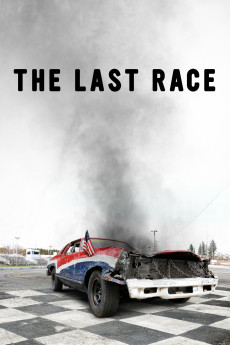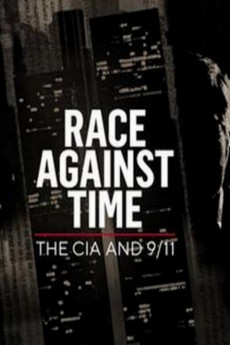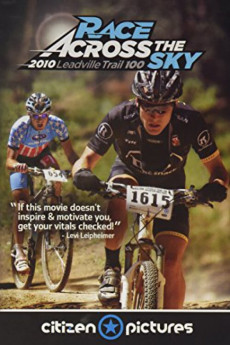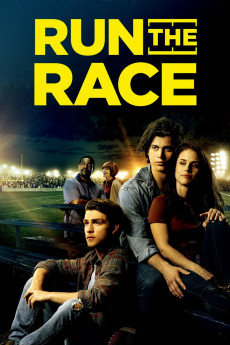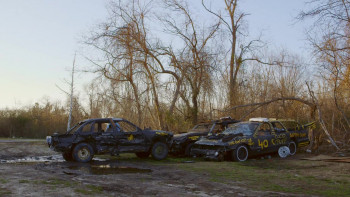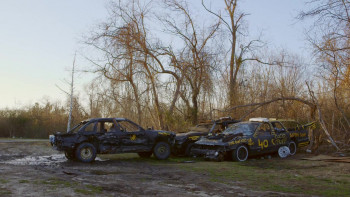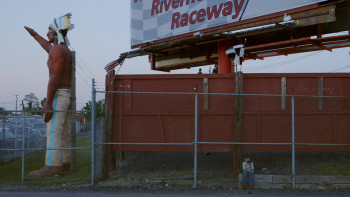The Last Race (2018)
2018
Documentary / Sport
The Last Race (2018)
2018
Documentary / Sport
The Last Race (2018) Synopsis
THE LAST RACE is a cinematic portrait of a Long Island stock car race track as its octogenarian owners struggle to maintain an American racing tradition in the face of a real estate development boom. The film merges image, and sound in a unique narrative form to bring the audience into the world of grassroots racing culture and explore a story that subtly grapples with questions of blue collar American identity that have taken on a profound relevance in the current political era.Long Island was the birthplace of American stock car racing. At its peak, there were over forty racetracks on Long Island, but today, only one remains: Riverhead Raceway. This quarter-mile track somehow managed to slip through the cracks as progress transformed Long Island from a stretch of sand with sleepy main streets and mom and pop farm stands, to a maze of highways connecting shopping malls to buy-in-bulk shopping centers. When it was built in 1949, the racetrack sat on the edge of a small country road surrounded on every side by miles of farmland. Years later, the country road expanded into a highway and eventually corporate retail discovered that the steady flow of traffic from the rest of the island made it a prime location to set up shop. First came an outlet mall, and as the outlet mall grew, the usual suspects of big retail followed. The surrounding farmland was gobbled up by box stores plastered with corporate logos, and today the Riverhead Raceway is the only piece of land on the commercial strip of Old Country Road that hasn't been developed.The land the track sits on is valued at well over ten million dollars, while the money that it generates in ticket sales on summer weekends is barely enough to keep the lights on. The fact that the Riverhead Raceway remains open defies the laws of capitalism, and the only thing standing in the way of the bulldozers are 87-year-old Barbara and Jim Cromarty. Barbara and Jim bought the track in 1977 and they continue to run it even as multi-million dollar offers roll in, tempting them toward a well-deserved retirement. Barbara and Jim fight to keep it open because they understand that Riverhead carries the burden of being the last bastion of stock car racing on Long Island, and when Riverhead goes, it's all over.Unlike the box stores that surround it, the Riverhead Raceway wasn't designed in a corporate boardroom for maximum efficiency and maximized profit margins. It grew out of a place and a community that loved to go fast. It started with old wrecks racing around a dirt oval in an empty field. After spectators started turning up for the races, someone decided to lay down asphalt, then stands, and eventually the Cromartys made a business out of it by charging admission and selling hot dogs and tee shirts. But what they sell is more than the spectacle of racing and empty calories; it's membership to a tribe of blue-collar workers who work with their hands to build racing machines out of metal and grease. They live for speed, the chaos of the race, and the drama of the pits. They are fighters and adrenaline junkies, whose identity is inexorably linked to a slice of land where blue-collar glory triumphs over white-collar profit.Beauty at Riverhead takes its most primitive and visceral form. Like visiting a remote jungle tribe, a trip to Riverhead reveals the creations of a community that has passed down building techniques through the generations and crafted their vision of the world with the tools and materials at their disposal. The cars are their weapons, sculptures, flags and family crests rolled into one. They are built from pieces and parts that the drivers salvage like treasure hunters in junk yards; relics of another era, a time when cars were constructed with nuts, bolts, and welding torches, not silicon and plastic. The dents on their paneling and the scars on their bodies are the records of their past. The announcer is the narrator who tells the story of their battles to the audience of the Coliseum. The cries of the engines are their music, and the race is their triumphant dance that erupts every weekend in a violent swirl of color, sound, and emotion.Barbara and Jim are old; their health is failing. It's not clear how long they will be able to continue running the track, and it's even less clear what their plan for succession is. Developers are waiting at the gate with million-dollar offers and leasing agreements. If Barbara and Jim give in, the laws of capitalism will have triumphed, and the chaos of Riverhead will give way to cinder block construction, an orderly parking lot, and a sterile interior.The racers and their fans know this. They see their universe slipping away from them, swallowed up by the same globalized system of commerce and culture that is replacing indigenous life around the world. It's easy to let that happen. When the track finally goes, corporate retail will be there to take its place. The land occupied by the Riverhead Raceway will become indistinguishable from the myriad commercial strips that cover the American landscape. Saturdays will be spent pushing shopping carts through the aisles of neatly packaged products. It won't smell like gasoline and burnt tires. The roar of engines will be replaced by the barely perceptible hum of pleasant music. There will be no speed, no thrills, no fights, no victories, no crashes, and no glory. There will be calm.But that calm is deadly.THE LAST RACE is the story of a place and people who have found a reason to live and a glimpse into their last gasp of passion before the bulldozers move in.
Published Time: 2022-10-27 21:31:15

